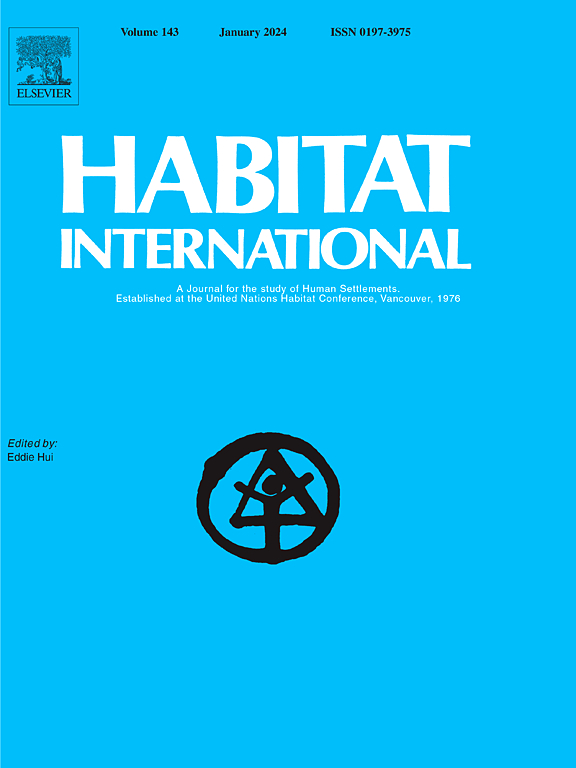Rural social space differentiation: The construction and representation of social relations
IF 6.5
1区 经济学
Q1 DEVELOPMENT STUDIES
引用次数: 0
Abstract
Rural social space can reveal the changes of rural social structure and the distribution of spatial resources. The difference of rural development between East and West and the long-standing dualistic divide between urban and rural areas necessitate a deeper exploration of rural social space research in China. This paper systematically explored the formation of rural social space from the perspective of rural social relations, and took Henapo Village as an example to illustrate the constructive role of rural social relations in rural social activities, as well as the external representation of these activities based on this, and explored the differentiation mechanism of rural social space. The research results indicated that within the internal construction of rural social space, the village had developed internal characteristics supporting various social activities primarily based on blood relations, supplemented by business and geographic relations. The external representation of rural social space exhibited a spatial characteristic of social activities structured as “home-administrative village/natural village-county.” The social space of Henapo Village exhibited a core-periphery layered structural characteristic, where social relations in the core layer were relatively intimate, social activities were simpler, and the activity space was more concentrated compared to the peripheral layer. The social space differentiation in Henapo Village was mainly influenced by villagers, the village committee and the natural environment, resulting in land enrolment, industry enrolment, demand enrolment and resource enrolment. The decisive driving force of the village committee, the fundamental driving force of the natural environment and the endogenous driving force of villagers worked together to promote the significant differentiation of the physical-social environment and social groups in Henapo Village. The differentiation of social relationship networks and the diversity of social activities occurred and were fed back to the key actors, resulting in the differentiation of rural social space.
乡村社会空间分异:社会关系的建构与表征
农村社会空间可以揭示农村社会结构的变化和空间资源的分布。东西方乡村发展的差异和长期存在的城乡二元分化,要求中国乡村社会空间研究进行更深入的探索。本文从乡村社会关系的视角系统探讨了乡村社会空间的形成,并以河南坡村为例,阐述了乡村社会关系在乡村社会活动中的建构作用,以及在此基础上乡村社会活动的外在表现,探讨了乡村社会空间的分化机制。研究结果表明,在乡村社会空间的内部建构中,村落形成了以血缘关系为主、商业关系和地理关系为辅、支持多种社会活动的内部特征。乡村社会空间的外部表征呈现出“家-行政村/自然村-县”的社会活动空间特征。汉纳坡村的社会空间呈现出核心-外围分层结构特征,核心层的社会关系相对亲密,社会活动较为简单,活动空间较外围层集中。汉纳坡村的社会空间分异主要受村民、村委会和自然环境的影响,包括土地登记、产业登记、需求登记和资源登记。村委会的决定性动力、自然环境的根本动力和村民的内生动力共同推动了汉纳坡村物质社会环境和社会群体的显著分化。社会关系网络的分化和社会活动的多样性发生并反馈给关键行动者,导致农村社会空间的分化。
本文章由计算机程序翻译,如有差异,请以英文原文为准。
求助全文
约1分钟内获得全文
求助全文
来源期刊

Habitat International
Multiple-
CiteScore
10.50
自引率
10.30%
发文量
151
审稿时长
38 days
期刊介绍:
Habitat International is dedicated to the study of urban and rural human settlements: their planning, design, production and management. Its main focus is on urbanisation in its broadest sense in the developing world. However, increasingly the interrelationships and linkages between cities and towns in the developing and developed worlds are becoming apparent and solutions to the problems that result are urgently required. The economic, social, technological and political systems of the world are intertwined and changes in one region almost always affect other regions.
 求助内容:
求助内容: 应助结果提醒方式:
应助结果提醒方式:


